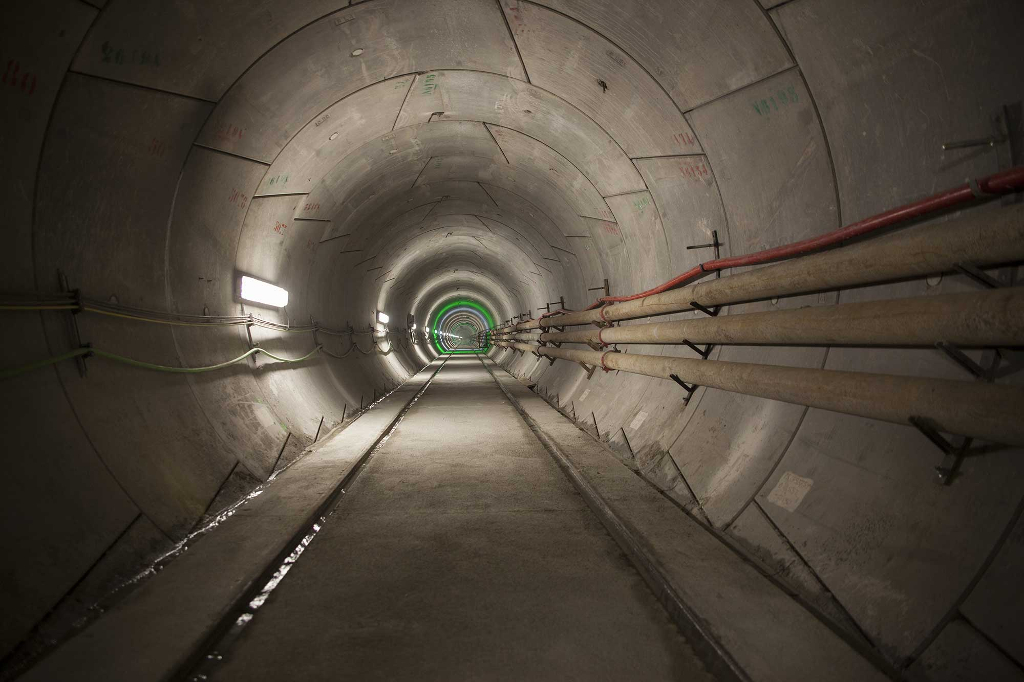Work on the Interconnection Project is Completed
After two years of work, the excavation of the trenches for the new electrical interconnection between France (Baixas) and Santa Llogaia (Spain), as well as the construction of the converter stations, was completed this summer.
 Fernando Huarte
Fernando Huarte
Después de dos años de trabajo, este verano ha finalizado la excavación de las zanjas de la nueva interconexión eléctrica entre Francia (Baixas) y Santa Llogaia (España) así como la construcción de las estaciones conversoras.
Para transformar la corriente continua en corriente alterna en cada extremo de la línea (Baixas y Santa Llogaia) se diseñaron dos estaciones conversoras. Cada estación consta de dos edificios principales, que albergan los módulos de potencia (los encargados de la conversión de la corriente alterna en corriente continua), siete transformadores de más de 250 toneladas de peso (cuyo transporte desde Alemania ha precisado de una logística especial), un sistema de enfriamiento del aire y otros dos edificios más pequeños donde se ubica el equipo de control. Los trabajos para la construcción de las estaciones conversoras comenzaron en enero de 2012 en la zona española, un poco después en la francesa, y finalizaron agosto de 2014.
Two converter stations were designed to convert the direct current to an alternating current at each end of the power line (Baixas and Santa Llogaia). Each station has two main buildings, which house the power modules (these are responsible for converting the alternating current to a direct current), seven transformers weighing more than 250 tonnes (whose transportation from Germany required special logistics), an air cooling system and another two smaller buildings in which the control equipment is kept. The construction work for the converter stations started in January 2012 on the Spanish side, and slightly later on the French side. This work was completed in August 2014.
On the other hand, the excavation of the trenches started in July 2012 and finished in October 2013 on the French side, whereas on the Spanish side it started in January 2013 and finished in July 2014. The new line (which will double the electricity exchange capacity between France and Spain) runs through the two parallel trenches, which are 64.5 kilometres long (26 kilometres in France, 30 kilometres in Spain and 8.5 kilometres in the tunnel that crosses the Pyrenees). The decision to lay the line underground, to minimise its environmental and social impact, posed a major technological challenge.
The total width of the two trenches, including the gap between them, is about three metres and the depth is 1.5 metres. Two parallel cables have been laid in each of the trenches. It was necessary to drill 37 holes, 22 in Spain, and 15 in France, to avoid the major geographical obstacles. Also, a special strategy was employed to ensure maximum safety and minimise the impact of the work. Once excavated, the trenches were filled the following day, after the cable pipes and concrete were laid. Almost a hundred people worked on the excavation and the project has been an example of cooperation, with several teams working simultaneously in different areas in order to respect the agricultural and environmental restrictions, as well as the working periods agreed with the owners and farmers.
Tests to check that the interconnection is working properly will continue to be carried out until it becomes operational in the middle of 2015.
PRESS CONTACT
Gabinetedeprensa@ree.es
rte-presse@rte-france.com
PRESS AREA
- Press releases
- High resolution images
- Branding Manual
- Iconography
